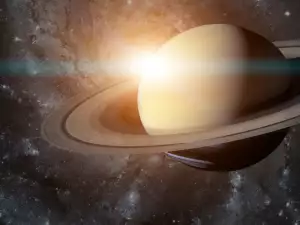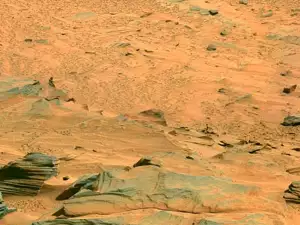For several years Mars has been in the process of slowly destroying its natural satellite Phobos, announce NASA experts, who are studying the impressions and surface of Phobos.
The 1st stage of the celestial body's destruction has already begun, provoked by the tidal forces between the satellite and the Red Planet.
The distance between Phobos and Mars is 6000 km (3700 mi), the shortest distance between any moon and the planet it orbits in our Solar System. Scientists are positive that it is this small distance that will be responsible for Phobos's ultimate destruction.
The Red Planet's moon gets 6.6 ft (2 m) closer to it every 100 years. But even though its end is approaching in terms of planetary conditions, the moon won't fall apart for another 30-50 million years.
The satellite is irregularly shaped and the larger of the 2 moons orbiting Mars. Due to the immense gravitational force, there is no way for Phobos to be round.
The ridges on its surface are from about 98 ft (30 m) deep, up to 65.5 ft (20 m) wide and 12 mi (20 km) long or longer. Initially it was believed that these ridges were caused by the formation of the large Stickney crater.
But NASA models discovered that the channels formed as a result of the tidal forces of the gravity between Mars and Phobos. These same types of forces between the Earth and Moon create the high and low tides of our oceans and seas.
The theory of tidal forces was presented in 1970, supported by photos taken by the Viking space probe. But at the time scientists believed that Phobos's surface was plenty dense.
It is now thought that the interior of the satellite consists of debris covered with a thick outer layer of powdery regolith.
But the interior is prone to changes that can also alter its outer layer. Experts theorize this is due to pressure that will, with time, expand the ridges along the surface of Phobos.









